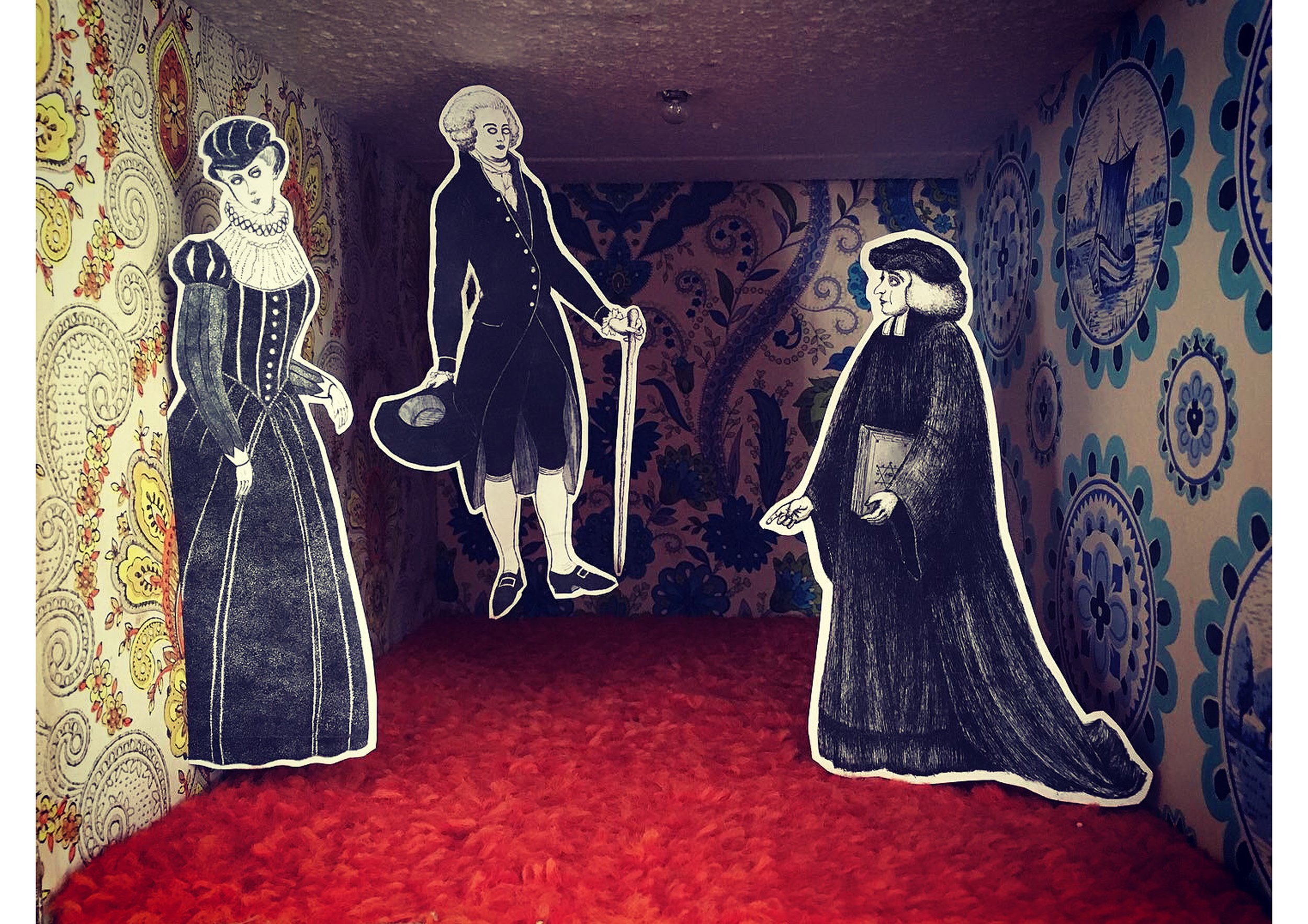Museum of Curiosities - Museum of Curiosities
Museum of Curiosities - Museum of Curiosities








Faerie Pipe
Cutty Dyer
Beware, Cutty Dyer is rising! The ogre once terrorised the Yeo (or Ashburn river as it’s now known), near Cuddyford Bridge, Ashburton. He has red, glowing saucer eyes, shark-like teeth and long black hair resembling writhing snakes, with a beard of the same hue that reaches his belt. Cutty Dyer likes nothing better than to drag unwitting folk into the river, especially the inebriated.
Until now, he had not been seen since the introduction of street lighting. A recent trip to his old haunt provides the only current explanation for his reappearance. Having rescued my travel cup from the Ashburn, a drop of river water may have been inadvertently transferred to the teapot. I recently purchased it from an odd little Curiosity Shop on the moor. In a bid to solve this mystery, I have tried to relocate the shop with the sole aim of quizzing the rather curmudgeonly proprietor. My ventures have so far been unsuccessful.
Green Man Masks
Made from lichen & oak leaf detritus, gathered on Dartmoor whilst being pixy-led. We gracefully age together (or perhaps not ?)
2013
2024
Parson Harris
This image, created in a 1970s doll’s house, features Parson Harris, an 18th-century conjuring parson and wizard from Hennock, a village on the eastern border of Dartmoor. Conjurors use magic spells to invoke and control spirits & by the 1600s they were much in demand, not only to lay ghosts, but also to cure specific diseases, find lost property, and even predict the future through astrology. In this scene, the parson has gone one better and time-travelled to the 1970s, where he confronts two particularly lively ghosts haunting a semi-detached property in the suburbs of Plymouth. He is equipped with his trusty copy of Agrippa’s Fourth Book of Occult Philosophy (the Robert Turner edition), a popular grimoire amongst 18th and 19th century English cunning-folk.
The Phantom Monks of Bovey Tracey
This scene was also created in the Doll’s House. It represents a dwelling near Bovey Tracey, a small town on the edge of Dartmoor, which was once haunted by a procession of phantom monks. They were seen passing up and down the staircase at the same time every evening until the place was eventually exorcized. The staircase had once belonged to Buckfast Abbey and on the backs of some of the treads were the carved names and initials of the monastery’s former inhabitants.
The Doors of Perception
Behind the first door is a veil of mesh, entwined with pieces of clockwork, which represents the mechanistic worldview; beyond this are a series of mirrors, two door-windows (depicting painted silhouettes of trees) and a home-made sound recording of bats flying. Together, these elements symbolise the anima mundi (the soul of the world), the Deep Ecologist’s network of’ interconnected and interdependent’ phenomena and the Spirit of Place. The mirror is a universal symbol for truth, the soul and the ‘mirror of the universe’. In Chinese culture, a square mirror symbolises the earth. The trees stand for the cosmos in its entirety and ‘the feminine principle, the nourishing, sheltering, protecting, supporting aspect of the Great [Earth] Mother’. The bat sounds (echolocation), usually pitched at a frequency beyond the natural hearing range of adult humans, meanwhile, reveal a hidden world of animate presence, the inaudible made audible.
The political theorist Jane Bennett refers to the possibility, suggested by Deleuze and Guattari, of sounds that can ‘provide sensory access to the cosmological dimension of things’, attachment to life, and the location of enchantment. Bennett sums up her approach in the following quote:‘ through sound, through the various refrains we invent, repeat, and catch from nonhumans, we receive news of the cosmic energies to which we humans are always in close, molecular proximity’. The audio recordings of bats can, I believe, be viewed in this light, as a way of connecting humanity to the non-human world of which it is an integral part.
Bennett, J., (2001) The Enchantment of Modern Life: Attachments, Crossings and Ethics. Princeton: Princeton University Press.
Cooper, J.C., (1979) An Illustrated Encyclopaedia of Traditional Symbols. London: Thames & Hudson.
Faerie Host (sluagh sídhe)
Another faerie-related artefact from the Professor Corvus Montague Withers Collection at the Dartmoor Institute.
The Faerie Host, suspended in time and space through liquid enchantment, was conjured from the paper village of Llanfaircefnbedd, where Professor Corvus* mysteriously disappeared for a second time whilst on the trail of the Cath Pulag, the monstrous cat of the mediaeval Welsh Llyr Du Caerfyrddin (Black Book of Carmarthen).
The fae, when reanimated, can be bound to the Prof’s will and at his command.**This is dangerous business, as attested by various early modern grimoires such as Sloane 1727 and 3851, Ashmole 1406, Clm 849 and Folger MS Xd 234. Violent pinching, blood sucking, wounding with elfshot, and sacrificing to hell have all been blamed on the faeries. A large number of spells are concerned with thwarting the faerie’s predilection for mischief. They are precluded from holding any power over the spellweaver's mind or body, or indeed hurting any living being.
*Discoverer of the only known Dartmoor faerie pipe, found on Sheepstor in 1895 (artefact #1 in the Museum of Curiosities).
**I want to clarify that as a friend of the faeries, I’m against such sorcery. However, the Professor’s work has in general had an overwhelmingly positive effect on faerie lore research.







